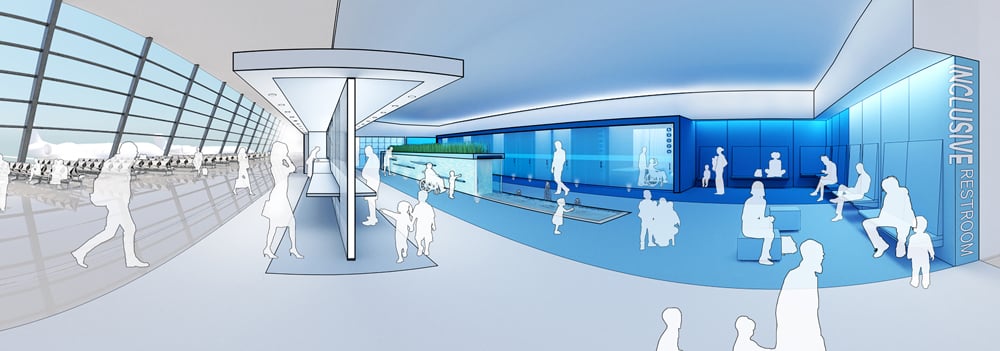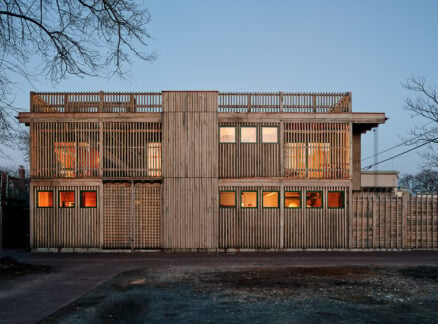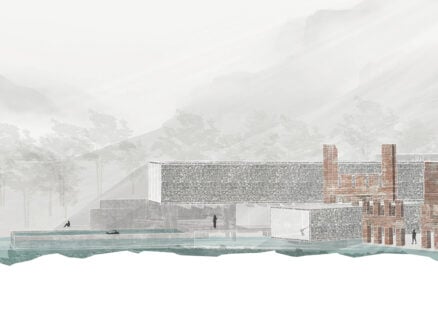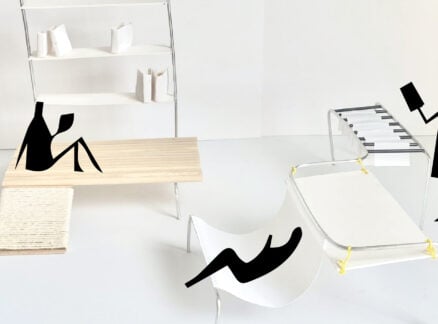
July 27, 2018
This Consultancy Firm Wants to Make Equitable Design the New Normal
MIXdesign, a new design consulting firm from architect Joel Sanders, aims to reimagine architecture by considering people of all genders, races, and abilities.

When it comes to gender-neutral design, most people probably think of bathrooms. However, a new design consultancy seeks to expand the principles of equitable design to the entire built environment.
The consultancy, MIXdesign, was launched last June at the AIA Conference on Architecture, though it builds off an existing initiative, Stalled!, a research and advocacy group focused on transgender access to public restrooms. Both groups are the brainchild of architect Joel Sanders, transgender activist and historian Susan Stryker, and legal scholar Terry Kogan.
Building off Stalled!’s mission of of inclusivity, MIXdesign is a design consulting firm aimed at creating diverse public spaces that consider people of all genders, ages, races, and abilities. MIXdesign will apply inclusive design principles to help clients (such as universities, museums, and corporations) through educational workshops, project advising, and in some cases, architectural services.
“The default user of architecture, which is transmitted in building codes, architectural guidelines, and even in architectural education, is basically a youthful, healthy, able-bodied, cisgender, white citizen,” Joel Sanders, principal of New York-based firm Joel Sanders Architect and director of post-professional studies at the Yale School of Architecture, tells Metropolis.
In the case of museums, issues like access and the height of displays—often aimed at able-bodied people walking around a room—arise when trying to craft welcoming environments for a broad range of users. For universities that dedicate extensive time and resources to inclusion and diversity initiatives, shared spaces such as libraries or student centers are often left out of the conversation, says Sanders.
“When you say gender and architecture, people often scratch their heads, but I think architecture is helping us define and perform our identities,” says Sanders.
He cites artist Cindy Sherman’s conceptual Untitled Film Stills series, black-and-white portraits that feature the artist in stereotypical female roles inspired by old Hollywood, as an example. Sherman didn’t just emulate these character through her physical appearance, said Sanders, but also through a “meticulous attention to decor and interiors that are critical to the construction of gender.”
Depending on the audience, responses to inclusive design can be, well, mixed. One issue Sanders notes is money—people are concerned that designing for diversity will come at a cost. Using the gender-neutral bathroom example, Sanders argues that getting rid of binary restrooms can be space-saving and competitively priced, or even less expensive.
There’s also the discomfort level to worry about. “Designing for inclusion asks us to call into question our ideas of what is normal and abnormal, appropriately male and female. These are things that are culturally ingrained and can make people feel uncomfortable,” says Sanders.
Feminists note that taking away gendered bathrooms eliminates what is traditionally a place of refuge for many women. Sanders recognizes the point, but suggests prioritizing intersectionality (i.e. addressing systematic bias from the perspective of all marginalized groups) rather than the issues of a single demographic in design.
As for the future of inclusive design, Sanders compares the movement to where sustainable design was 15 years ago. “What people thought was a stretch and something that would be burdensome and expensive is something that we have now increasingly realized is important and are conscious of,” he says.
“When designers begin a project, they inevitably begin to think, ‘Who are my users, what kind of bodies am I dealing with, and how do I design for difference?'” says Sanders. “I think that just needs to become wired into the thought process.”
You might also like “Why Gender-Neutral Bathrooms Matter.”






